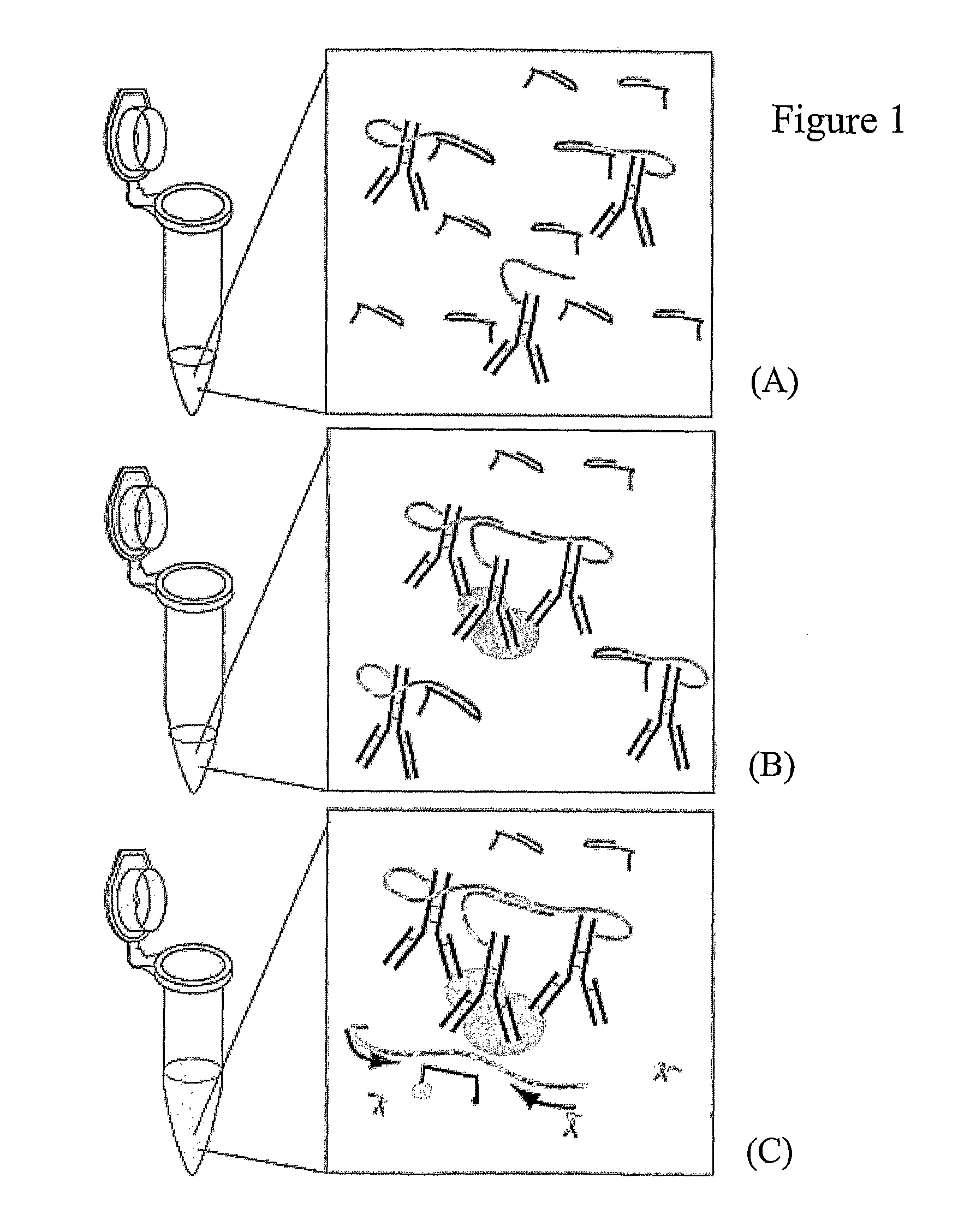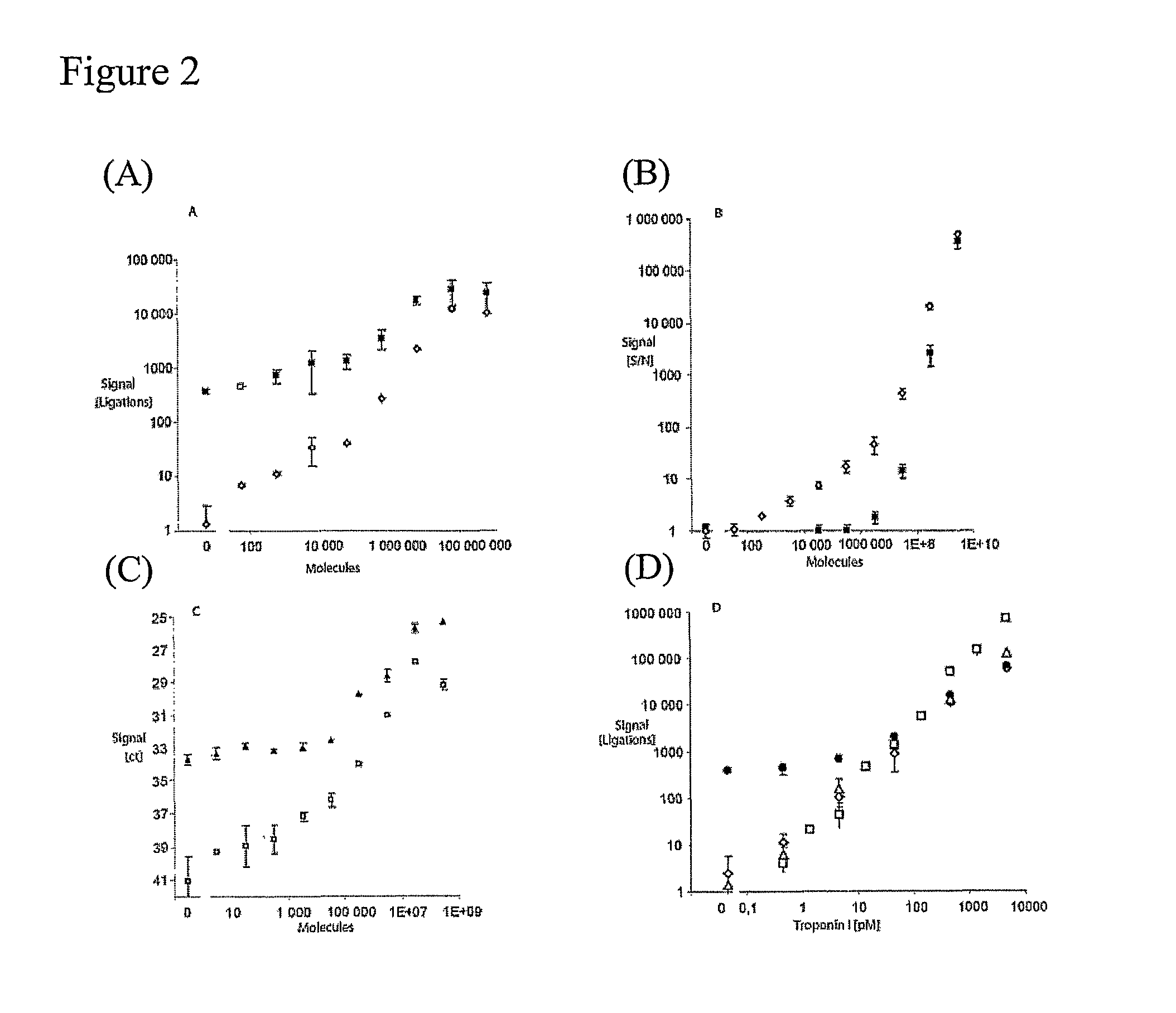Method for analyte detection using proximity probes
a proximity probe and analyte technology, applied in the direction of material testing goods, biochemistry apparatus and processes, sugar derivatives, etc., can solve the problems of limiting the sensitivity of the assay, the range over which quantitative results may be obtained, and the detection of approximately 6000 molecules
- Summary
- Abstract
- Description
- Claims
- Application Information
AI Technical Summary
Problems solved by technology
Method used
Image
Examples
example 1
[0148]The method of the invention was used to detect different proteins.
[0149]Vascular endothelial growth factor (VEGF) is a homodimeric, 42 kDa cytokine which at low concentrations stimulates growth of blood vessels. Detection of VEGF was carried out using an affinity-purified polyclonal antiserum that was split in two or three aliquots, respectively, for the two-probe, free splint assay and the binding splint assay of the present invention, and conjugated to the appropriate oligonucleotides (Table 1).
[0150]
TABLE 1SEQ NameSequenceModificationCompanyID NOL8560 Proximity probeCGCATCGCCCTTGGACTACGACTGACGA5′ AldehydeTriLink1arm 3′freeACCGCTTTGCCTGACTGATCGCTAAATCGTGL8561 Proximity probeTCGTGTCTAAAGTCCGTTACCTTGATTC5′ PhosphateTriLink2arm 5′freeCCCTAACCCTCTTGAAAAATTCGGCATCGGTGA3′ AldehydeL8562 Proximity probeTAGCTAAGGCTTAGTTAGACACGAGCA3′ AldehydeTriLink3arm hybridizationTTATGGAGTGCAGGATCACGATTTAGL8388 Primer FwdCATCGCCCTTGGACTACGABiomers4L8389 Primer RevGGGAATCAAGGTAACGGACTTTAGBiomers5X00...
PUM
| Property | Measurement | Unit |
|---|---|---|
| molecular weight | aaaaa | aaaaa |
| temperature | aaaaa | aaaaa |
| temperature | aaaaa | aaaaa |
Abstract
Description
Claims
Application Information
 Login to View More
Login to View More - R&D
- Intellectual Property
- Life Sciences
- Materials
- Tech Scout
- Unparalleled Data Quality
- Higher Quality Content
- 60% Fewer Hallucinations
Browse by: Latest US Patents, China's latest patents, Technical Efficacy Thesaurus, Application Domain, Technology Topic, Popular Technical Reports.
© 2025 PatSnap. All rights reserved.Legal|Privacy policy|Modern Slavery Act Transparency Statement|Sitemap|About US| Contact US: help@patsnap.com


